Quebec Snapshot: Eight explorers looking for gold and green metals opportunities
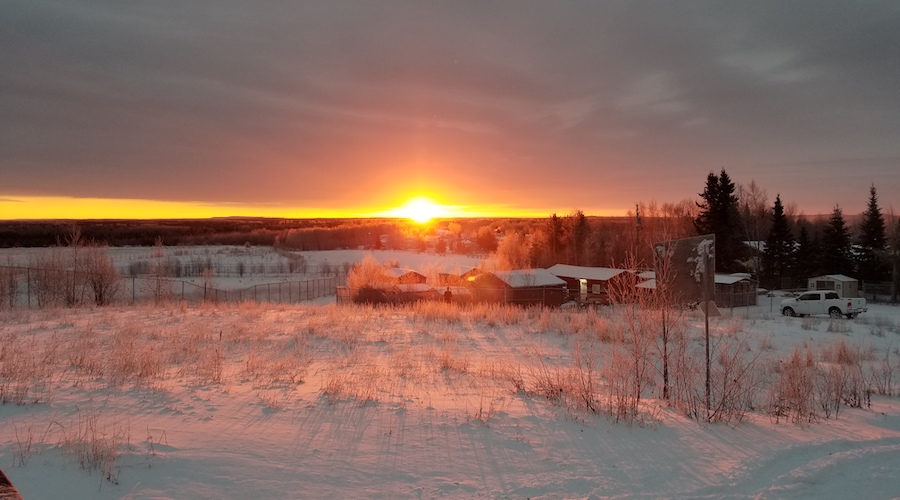
Perron contains the Eastern, Grey Cat and Gratien gold zones as well as the gold-rich central polymetallic zone along a 3.6 km corridor. Mineralization has been traced to a depth of 1,350 metres. This property is the centre of a C$30 million exploration program with ten drill rigs on the site last winter. The goal is to release an initial resource estimate by the end of 2021.
In the Eastern gold zone, several parallel zones have been discovered, chiefly the High Grade and Denise zones. The mineralization remains open in all directions along strike and at depth.
Drilling in the High Grade zone, the deeper (eastern) part of the zone, has returned grades as high as 102.09 grams gold per tonne over 6.1 metres. The shallower (western) portion has returned intercepts of 84.02 grams gold per tonne over 5.6 metres and 21.75 grams gold per tonne over 14.9 metres.
The Denise zone is known to extend to a vertical depth of at least 600 metres from surface and along a strike of at least 450 metres. Drilling in 2020 returned lengthy intersections including 115.6 metres grading 1.39 grams gold per tonne, 189.4 metres at 1.07 grams gold, 50 metres of 2.12 grams gold, and 100 metres of 1.01 grams gold.
Holes drilled in the Eastern gold zone for metallurgical testing in 2020 assayed 27.7 grams gold per tonne over 11.8 metres, 12.7 grams gold over 16.6 metres, and 5.65 grams gold over 10.6 metres. Tests concluded that overall gold recoveries would be over 99%, with 75% of the gold reporting to the gravity circuit.
Amex drilled the Grey Cat gold zone last year, confirming potential for an open pit. Significant intercepts included 39 metres grading 1.22 grams gold per tonne and 10.3 metres grading 4.54 grams gold.
The Gratien gold zone was also drilled in 2020. Intercepts there included 14.6 metres grading 16.48 grams gold per tonne, including 5 metres at 47.69 grams gold. Other holes returned 4.3 metres grading 16.77 grams gold and 4.9 metres grading 27.46 grams gold.
The company has an active regional drill program, as well. It made a new discovery, the 210 Gold zone, in 2020 that returned 3.9 metres grading 58.25 grams gold per tonne, including 0.5 metre of 412.3 grams gold from a vertical depth of about 110 metres. The same hole intersected 3 metres grading 19.08 grams gold per tonne, including 0.5 metre at 97.07 grams gold per tonne.
This year Amex drilled another new gold-bearing structure 650 metres northwest of the High Grade zone and 500 metres northeast of the Grey Cat zone. One hole returned 5.1 metres grading 31.87 grams gold per tonne, including several half-metre intersections as high as 239.91 grams gold per tonne, although 5 grams gold to 20 grams gold was more representative.
A new copper-rich volcanic massive sulphide (VMS) zone was also drilled this year at the Perron property. The discovery was made as part of a small program to assess the base metals potential of the property due to its proximity to the past-producing Normetal mine. Hole PEX-21-076 returned 7.8 metres grading 2.4% copper, 0.72% zinc, 0.27 gram gold per tonne, and 22.15 grams silver per tonne. Within that core, a length measuring 0.9 metres graded 6.84% copper, 4.65% zinc, 0.30 gram gold per tonne and 73 grams silver per tonne.
Perron has two other gold properties in Quebec. The Lebel-sur-Quévillon project near the town of the same name and the Eastmain River project in the Eeyou Istchee James Bay region.
Amex Exploration has a market capitalization of C$241.6 million.
Bonterra Resources
Bonterra Resources (TSXV: BTR; US-OTC: BONXF) holds property that covers more than 38,000 hectares in the Urban Barry mining camp. So far 20 gold showings have been identified along a 25-km-long geological structure.
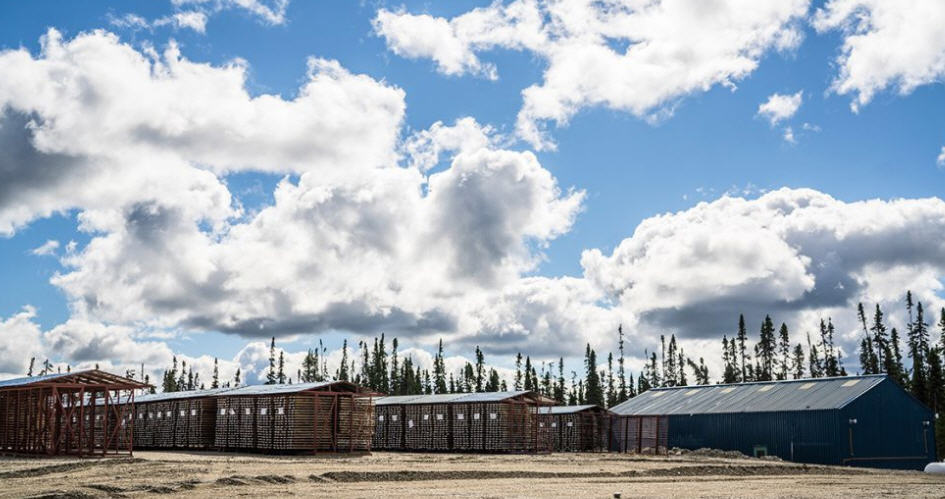
Currently, the company is expanding the resources at three of its gold deposits in Quebec — Gladiator, Barry and Moroy. The resource estimates for all three were updated this year and are now being used to create a preliminary economic assessment that will combine all three into a single project using the Bachelor mill to treat all the ore, which has been upgraded to 2,400 tonnes per day.
Together the three deposits have measured and indicated resources of 7.4 million tonnes grading 5.21 grams gold per tonne for 1.2 million oz. of contained gold. The inferred category contains 6.2 million tonnes grading 6.05 grams gold per tonne for 1.8 million ounces.
The Moroy gold deposit is 1 km south of the Bachelor mill and accessed through the former Bachelor mine. Bachelor-Moray contains 893,000 measured and indicated tonnes grading 5.58 grams gold per tonne for 161,000 oz. of contained gold. The inferred resource stands at 614,000 tonnes grading 5.29 grams gold per tonne for 104,000 ounces. The proximity to the mill makes this a potential early source of ore, and the Moroy deposit has already been bulk sampled.
The Gladiator and Barry properties are close to Osisko Mining’s Windfall gold project about 110 km by road to the south of Desmaraisville. The Gladiator deposit lies in the western part of the property, and the Barry deposit in the eastern part.
The Gladiator gold deposit has 1.4 million indicated tonnes grading 8.61 grams gold per tonne for 391,000 oz. of contained gold and 4.2 million inferred tonnes grading 7.27 grams gold per tonne for 989,000 ounces.
Resources for the Barry open pit are 1.7 million measured tonnes grading 2.66 grams gold per tonne for 148,000 oz. of contained gold; 184,000 indicated tonnes grading 2.88 grams gold per tonne for 17,000 oz. of contained gold; and 15,000 inferred tonnes grading 2.36 grams gold per tonne for 1,000 ounces.
There is also an underground resource for Barry. It includes 344,000 measured tonnes grading 4.94 grams gold per tonne for 55,000 oz. of contained gold; 2.8 million indicated tonnes grading 5.15 grams gold per tonne for 470,000 oz. of contained gold; and 4.4 million inferred tonnes grading 4.9 grams gold per tonne for 687,000 ounces.
Bonterra’s exploration efforts at these properties have identified over 3 million oz. of gold in the ground.
Bonterra Resources has a market capitalization of C$117.8 million.
Bonterra Resources
Doré Copper Mining (TSXV: DCMC; US-OTC: OTCQX) hopes to implement a hub-and-spoke plan for its copper-gold projects in Chibougamau, Quebec. The hub will be the Copper Rand mill, and the spokes will be the Copper Rand, Cedar Bay, Corner Bay, and Devlin deposits feeding the mill.
Doré holds about 12,100 hectares of land in the area, which has seen limited exploration over the past 20 years, and the 2,700 tonne-per-day Copper Rand mill has been idle. The company holds 13 deposits and resource target areas within 60 km of the mill. The known deposits are open for expansion, and the company hopes that its 50,000 metre drill program will grow the resources.
The company is preparing a preliminary economic assessment due out in January 2022. The PEA will cover the Corner Bay copper-gold, Devlin copper, and the optioned Joe Mann gold-copper projects. The largest source of ore will be the Corner Bay deposit.
The Corner Bay copper and gold project 55 km south of Chibougamau is at the advanced exploration stage. It was acquired in 2008 and will be the main source of ore for the mill. It is developed via ramp access to a depth of 115 metres on three levels. A bulk sample of 36,000 tonnes grading 2.48% copper and 0.44 gram gold per tonne was processed at the Copper Rand mill with average recoveries of 94% copper and 81.5% gold using gravity and flotation.
The indicated resource at Corner Bay is 2.7 million tonnes grading 2.68% copper and 0.26 gram gold per tonne for contained metal of 147 million lb copper and 22,000 oz. of gold. The inferred portion is 4.5 million tonnes grading 3.2% copper and 0.27 gram gold per tonne for 320 million lb copper and 39,000 oz. gold.
Another spoke for the central Copper Rand mill is the Cedar Bay copper-gold deposit. It is a past producer, which yielded 3.9 million tonnes of mineralized material at 1.63% copper and 3.21 grams gold per tonne. It was mined from 1958 to 1990 to the 670.5-metre level, although the shaft goes down to a depth of 1,036 metres.
The Cedar Bay resource includes 130,000 indicated tonnes grading 1.55% copper and 9.44 grams gold per tonne for 4.4 million lb copper and 39,000 oz. of gold. The inferred portion is 230,000 tonnes 2.13% copper and 8.32 grams gold per tonne for 10.8 million lb. copper and 61,000 oz. gold.
In 2020, Doré optioned the closed Joe Mann gold-copper mine, which would be a secondary ore source for the mill. When the mine was active from 1956 to 2007, it produced 1.2 million oz. of gold. An inferred resource of 608,000 tonnes grading 6.78 grams gold per tonne for 133,000 oz. gold was estimated based on drilling this year.
Drilling in 2020 returned 4 metres grading 10.34 grams gold per tonne and 0.37% copper from the West zone; 1.3 metres grading 6.32 grams gold per tonne and 0.52% copper, including 0.45 metre at 17.7 grams gold and 1.23% copper in the Main zone; and 3 metres grading 10 grams gold per tonne and 0.4 metre of 40.8 grams gold per tonnes and 0.6% copper from the Far West zone.
Another secondary ore source is the Devlin deposit, a near-surface, horizontal copper occurrence. The 2,490 tonnes of development sent to the mill averaged 1.26% copper and had an overall recovery of 96.9% copper.
The company has two other earlier stage projects that could potentially feed the Copper Rand mill. The Lac Doré gold-copper project is 2 km from the mill and was mined in the late 1980s and early 1990s. (It closed in 1991 due to low gold prices.) The company believes it may be an extension of the Cedar Bay deposit. The other early-stage project is the former Norbeau gold mine, which produced about 160,000 oz. from 1965 to 1969. Drilling by Doré this year at Norbeau intersected the New vein 500 metres east of the existing shaft and the Sharpe vein 400 metre east of the New vein. Both veins are untested below depths of 100 to 150 metres.
Other assets include Portage Island located 1.5 km from the mill and the past-producing Gwillim gold mine, a joint venture with Argonaut Gold.
Major steps for Doré in 2022 will be to deliver a preliminary economic assessment in January, start work on a feasibility study to be completed in early 2023, and negotiate a definitive pre-development agreement with the Ouje-Bougoumou Cree Nation.
Doré Copper has a market capitalization of C$50 million.
Falco Resources
In 2012, Falco Resources (TSXV: FPC; US-OTC: FPRGF) acquired 100% ownership of 74,000 hectares in the Rouyn-Noranda mining camp, including the past-producing Horne copper mine complex and 13 other former producers. The company plans to restart production at Horne 5 in 2025.
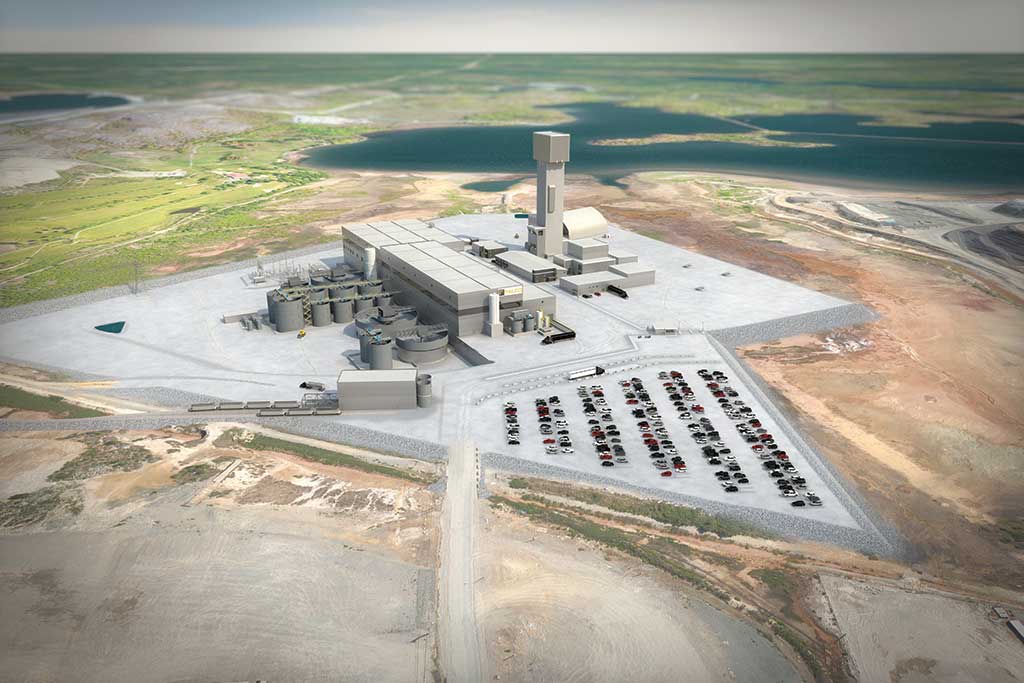
The feasibility study updated in April 2021 gives the Horne 5 project an after-tax net present value at a 5% discount rate of $761 million and an internal rate of return of 18.9%. Pre-production construction is estimated to cost $844 million (excluding the $51.5 million already spent at the site). The base case for the economics used metal prices of $1,600 per oz. gold, $21 per oz. silver, $3.20 per lb copper, and $1.15 per lb zinc.
The study estimated an underground mine life of 15 years with average annual gold production of 220,300 ounces. All-in sustaining costs are estimated at $587 per oz. net of by-product credits.
The orebody is low-grade and amenable to transverse long hole stoping. The host rock is competent, and dilution is expected to be about 3%. Mining will occur from 650 to 2,000 metres from surface. The historical mine will have to be dewatered for development to proceed in two phases. The first phase will be accessed via the existing Quemont shaft, and the second phase will require deepening the shaft.
Falco intends to take advantage of the latest technologies including remote operation, electric vehicles and artificial intelligence (AI).
The mill is planned with a throughput of about 16,000 tonnes per day. Mineralized material will be ground, cycloned and passed through a flotation circuit to produce a 16% copper concentrate (containing 40% of the gold and 32% of the silver). A 52% zinc concentrate will also be made.
Finally, a pyrite concentrate containing half the gold and 43% of the silver will be produced and reground. After carbon-in-pulp leaching, elution and refining, the precious metals will be recovered in gold-silver doré bars. Plans call for a cyanide destruction circuit, and final tailings will be disposed of underground and thickened before impoundment at the historic Norbec site (under option from First Quantum Minerals).
Horne 5 has proven and probable reserves of 80.9 million tonnes grading 1.44 grams gold per tonne for 3.6 million oz. of gold. The reserves also grade 14.14 grams silver per tonne, 0.17% copper and 0.77% zinc for 6 million gold-equivalent ounces.
Total measured and indicated resources (inclusive of reserves) are 91.2 million tonnes grading 1.55 grams gold per tonne, 14.89 grams silver per tonne, 0.18% copper, and 0.88% zinc. The inferred portion is 21.5 million tonnes grading 1.44 grams gold per tonne, 23.04 grams silver per tonne, 0.20% copper, and 0.71% zinc.
Falco Resources has a market capitalization of C$90.7 million.
Midland Exploration
Midland Exploration (TSXV: MD) is searching for the next major discovery in Quebec and has a dozen active projects, six of which are joint ventures, scattered around the province. They stretch west from Montreal and north though Val d’Or to the shores of Ungava Bay.
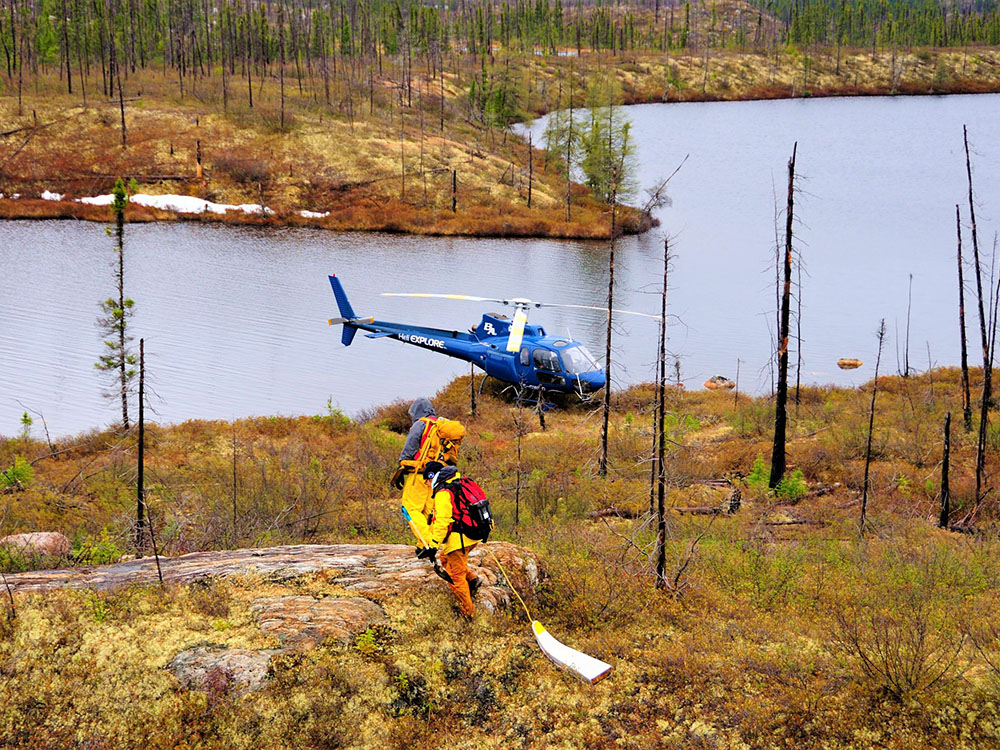
Midland has created strategic alliances with the help of partners including Agnico Eagle Mines, Osisko Development, Abcourt Mines and Probe Metals. Together, Midland and its partners have spent C$63 million exploring the potential of the province.
Midland has granted an option to Probe Metals to earn 65% of the La Peltrie gold project located about 25 km east of Kirkland Lake Gold’s Detour Lake gold mine and about 25 km north of the historic Selbaie gold mine. Gold-volcanic massive sulphide (VMS) mineralization was drilled at the site in 2017. Other targets on the property share characteristics with the mineralization found at Selbaie and at the recent Lower Detour discovery.
The Gatineau zinc project, about 200 km northwest of Montreal, is a 50:50 joint venture with the province’s exploration agency, SOQUEM. The region has seen a number of former mines and showings — Long Lac, Cadieux, New Calumet, Lafontaine, and Leitch. The Gatineau property, about 200 km from the Balmat camp in northern New York state, has potential to host an exhalative sedimentary (Sedex) deposit similar to the past-producing Balmat zinc mine.
Trenching at Leitch returned 24.1% zinc over 3 metres and at Lafontaine 21% zinc over 2 metres. Drilling in 2011 returned 3.8% zinc over 1.9 metres, including 6.6% zinc over 0.8 metre and 4.7% zinc over 1.2 metres. Drilling at the Bouchette claim block returned 3.24% zinc over 2 metres, including 6.68% zinc over 0.5 metre.
In addition to the Gatineau joint venture, Midland has a strategic alliance with SOQUEM that covers part of the Labrador Trough in Nunavik, west of the town of Kuujjuaq, Quebec. Two prospecting programs and an airborne versatile time domain electromagnetic (VTEM) survey were conducted at the project earlier this year.
Midland also has a strategic alliance with BHP covering a nickel-copper-cobalt property in the Core zone of Nunavik, east of the town of Kuujjuaq. Two new showings were prospected in 2020 and a regional VTEM was flown.
The Maritime-Cadillac gold project between the towns of Val d’Or and Rouyn-Noranda is a joint venture with Agnico Eagle Mines (51%) and Midland (49%). The property abuts Agnico’s Lapa gold mine on the south and is accessible via a new exploration drift through the Lapa mine to the property boundary. Drilling since 2007 has intersected several gold-bearing structures.
One of the better holes was in the DykeWest zone, which assayed 8.6 grams gold per tonne over 5.5 metres, including 13.8 grams gold over 3.3. metres. More recently, another hole returned 9.69 grams gold per tonne over 1 metre.
Midland has also created a 50:50 joint venture with Osisko to evaluate property near the Eleonore gold mine belonging to Newmont. The property covers the boundary of the La Grande and Opinaca subprovinces on both sides of the mine.
Midland and Osisko are sharing their databases and expertise about the region. They have discovered a high-grade copper-silver boulder field, samples from which contain up to 8.8% copper in the southern part of the project. The find suggests strong potential for porphyry style mineralization in addition to orogenic-intrusion related gold.
The Laflamme gold project is another joint-venture, 30 km west of the town of Lebel-sur-Quévillon, Quebec. It is a joint venture between Midland (75%) and Abcourt Mines (25%). A nickel-copper-platinum group metals (PGM) discovery, the Copernick zone at Laflamme, was made in 2016. Initial drilling intersected 42.6 metres that assayed 0.45% nickel, 0.33% copper, 0.15 gram platinum per tonne, and 0.24 gram palladium per tonne. Copernick is a large zone that includes two high grade cores.
Laflamme is primarily a gold project and drilling in the west part of the property returned 10 metres grading 0.25 gram gold per tonne, including 0.7 metre at 2.19 grams gold per tonne.
The Soissons regional-scale project is a 50:50 joint venture of Midland and Nunavik Mineral Exploration Fund (NMEF). Little exploration has been done in the area, but nickel-copper-cobalt mineralization was found in the winter of 2018-19. Four samples taken at that time yielded between 0.11% and 0.16% nickel and between 0.1% and 0.21% copper.
The Gaudet-Fenelon project, 40 km northwest of Matagami, is a 50:50 joint venture between Midland and Probe Metals. It is 5 km from the high-grade Tabasco zone at Walbridge Mining’s Fenelon gold project. Gaudet-Fenelon is to be drilled in the near future.
Midland optioned its 100% owned Casault gold property to Wallbridge Mining in 2020. The property is located 140 km north of La Sarre, and 40 km east of the Detour Lake gold mine. A new gold discovery, the Vortex zone, was made at Casault in 2017. It has now been traced over 1.5 km. Wallbridge, which is earning a 65% interest, recently reported drill results including 2 metres grading 6.85 grams gold per tonne.
Midland has several other 100%-owned properties that it is willing to option or joint venture. In the James Bay region, there is the Mythril property, where copper-gold-molybdenum showings were discovered in 2018, and it has numerous gold properties: Jouvex (near Matagami), the Lewis property (near Chapais), and Heva (near Chapais).
Midland Exploration has a market capitalization of C$42 million.
Osisko Mining
Osisko made its name by developing the largest gold mine in Canada — Canadian Malartic — and then sold the multi-million-ounce mine to a joint venture of Agnico Eagle Mines and Yamana Gold for C$3.9 billion in 2014.
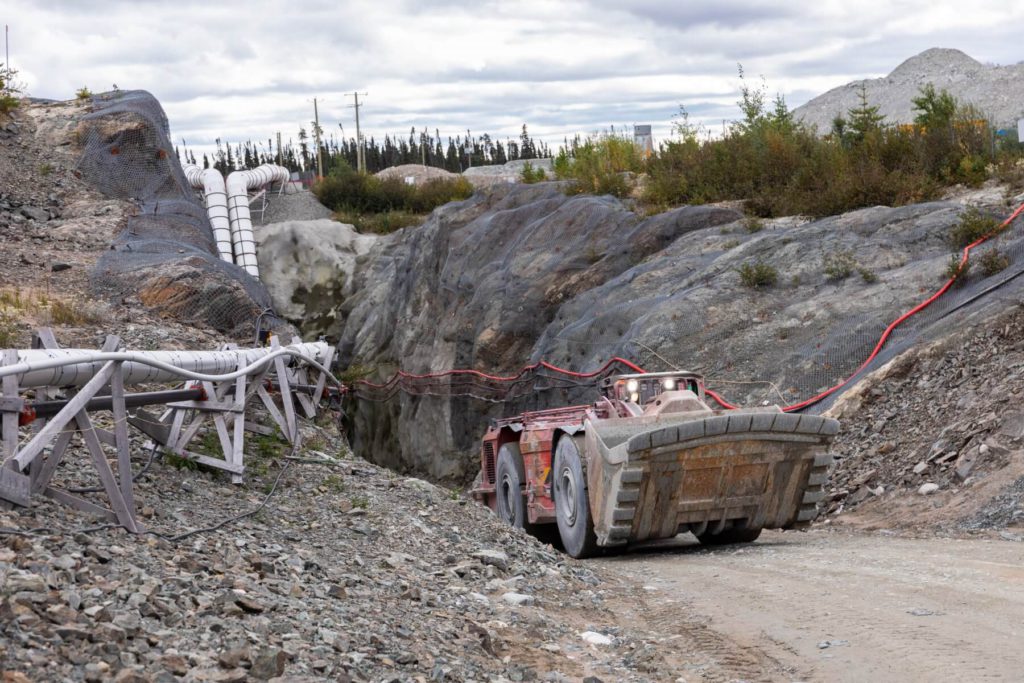
Not content to sit on their laurels, the former executives of Osisko created Osisko Mining (TSX: OSK; US-OTC: OBNNF) and got down to work exploring the 100%-owned Windfall gold property in Eeyou Istchee James Bay. This is a high-grade deposit that, when in production, will rate among the ten largest gold mines in Canada and the United States.
There are two deposits — Windfall and Lynx — for which resources were estimated in February 2021.
At a cut-off grade of 3.5 grams gold per tonne, the Windfall deposit contains 6 million measured and indicated tonnes grading 9.6 grams gold per tonne for 1.9 million oz. of gold. The inferred portion is 16.4 million tonnes grading 8 grams gold per tonne for 4.2 million ounces.
The Lynx deposit has a measured resource of 521,000 tonnes grading 11.3 grams gold per tonne for 189,000 oz. of gold. The indicated portion is 3.1 million tonnes grading 11 grams gold per tonne for 1.1 million oz. of gold. Inferred resources add 7.4 million tonnes grading 9.9 grams gold per tonne for 2.4 million ounces.
Since February, drilling has continued to return bonanza grades including: 3,979 grams gold per tonne over 2.3 metres; 1,096 grams gold over 2.7 metres; and 2,181 grams gold over 2.5 metres.
A preliminary economic assessment for Windfall released in February outlined a mine with an initial life of 18 years and average payable production in the first seven years of 300,000 oz. gold. All-in sustaining costs, net of by-product credits and royalties, would be $610 per ounce. Pre-production capex was forecast to run to C$544 million, including a new power line and a C$55 million contingency. Using a base case of $1,500 per oz. gold the study outlined a net present value after taxes and mining duties at a 5% discount rate of C$1.5 billion and an internal rate of return of 39.4%. Mining at Windfall could start as early as 2024 and full production reached the following year. The project is estimated to generate over C$8.2 billion of gross revenue and C$1.7 billion in taxes.
Drilling this summer discovered the new Golden Bear zone 1,000 metres north of the Windfall deposit. Three new targets have been drilled with core that assayed 67.1 grams gold per tonne over 2 metres, 62.15 grams gold over 2 metres, and 38.67 grams gold over 2.2 metres. Golden Bear remains open in all directions.
Osisko’s wholly owned Urban-Barry property surrounding the Windfall project is less advanced, but several gold occurrences have been outlined in the same geological setting and rock age as Windfall. No resource estimate has been made for this property.
Roughly 125 km west of Windfall is Osisko’s Quevillon property containing the Osborne-Bell deposit and several other gold showings. According to a resource estimate in 2018 using a 3 grams gold per tonne cut-off grade, the property contains 2.6 million inferred tonnes grading 6.13 grams gold per tonne for 510,000 oz. of gold.
Osisko Mining has a market capitalization of C$2.6 billion.
Osisko Mining
Probe Metals (TSXV: PRB; US-OTC: PROBF) is advancing its 100%-owned Val d’Or East project, 25 km east of the town of Val d’Or. It hosts one of the largest gold resources in the region — 1.8 million oz. in the measured and indicated category (29.8 million tonnes grading 1.18 grams gold per tonne) plus 2.3 million oz. in the inferred category (28.9 million tonnes grading 2.11 grams gold per tonne). The project covers 436 sq. km along the Cadillac Break. The property is home of three former producers — the Beliveau, Monique and Bussiere mines.
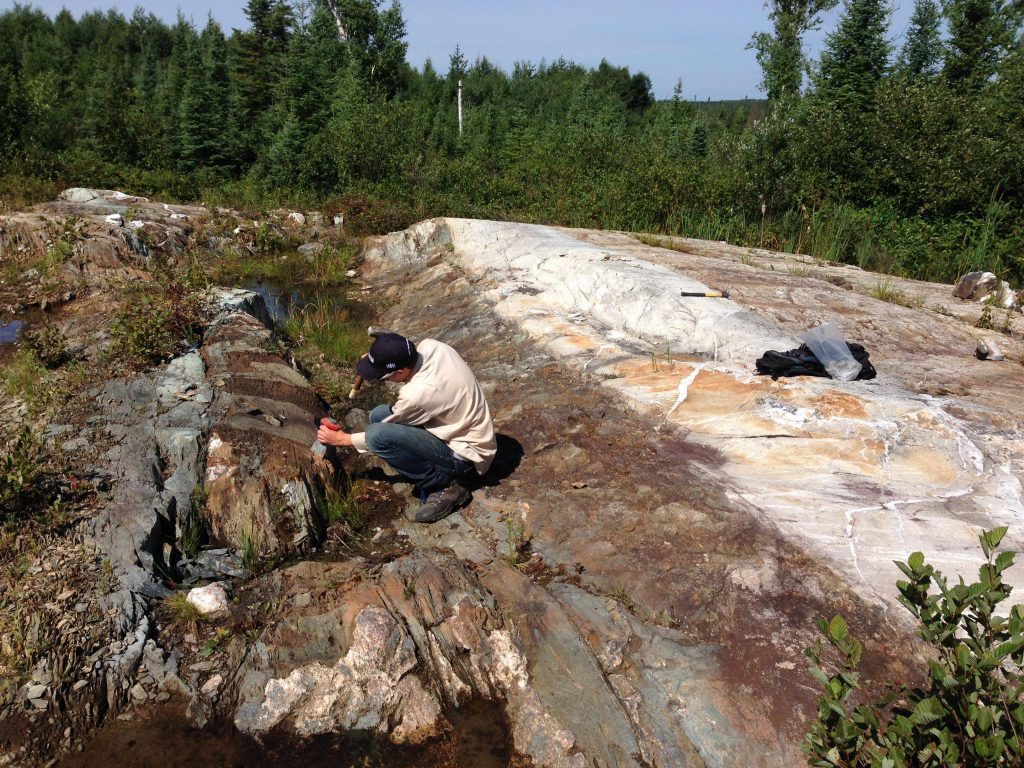
Last year a preliminary economic assessment for Val d’Or East outlined a mine life of 12.5 years producing an average of 207,000 oz. gold a year at an all-in sustaining cost of $965 per ounce. The study estimated initial capex of C$353 million and an after-tax payback period using a base case of $1,500 per oz. gold, of just under three years.
The PEA outlined an after-tax net present value at a 5% discount rate of C$598 million and an after-tax internal rate of return of 32.8%. Probe has plans to mine deposits along the Courvan, Pascalis and Monique mineralized trends at the Val d’Or East project. Each has multiple deposits, most of which can be mined as open pits using conventional truck and shovel methods.
The company recently released the best intercept to date from the Monique property, 26 metres grading 4.7 grams gold per tonne, including 0.9 metre grading 182 grams gold per tonne at 300 metres vertical depth in the M zone. Results continue to confirm the continuity and expansion potential of all three zones. The 2022 drill program at Val d’Or East will be 125,000 metres.
A new central mill with a capacity of 10,000 tonnes per day and a gold recovery rate of 94.7% will be built in the middle of the three trends. The plant will have a gravity circuit and then standard leaching, and a carbon-in-pulp recovery circuit. Tailings will be detoxified and dewatered before they are dry stacked.
The pit-constrained measured and indicated portion is 26.5 million tonnes grading 1.67 grams gold per tonne for 3.3 million oz. of contained gold. The inferred pit material is 20.7 million tonnes grading 1.58 grams gold per tonne for 1.1 million oz. of contained gold.
Underground mining will start in year four and the mill will be expanded to 16,750 tonnes per day when underground mining begins with the addition of crushing capacity and ore sorting to process lower grade material.
The underground resource has 3.3 million measured and indicated tonnes grading 2.95 grams gold per tonne for 309,400 oz. of contained gold. There are also 8.2 million inferred tonnes grading 3.43 grams gold per tonne for 906,500 oz. of contained gold recoverable by underground methods.
Elsewhere in Quebec, east of the Detour Lake gold mine, Probe has entered into the Gaudet-Fenelon joint venture and the LaPeltrie option with Midland Exploration.
Probe also holds 49% of the Dubuisson gold property (Agnico Eagle Mines owns the other 51%) 7 km west of the town of Val d’Or. This property borders Agnico Eagle’s Goldex mine.
Probe has two other advanced exploration gold projects. It owns 100% of the Lapaska project 20 km east of Val d’Or and 60% of the Sleepy project 30 km east of Val d’Or (O3 Mining owns the remaining 40%.)
Other assets in its portfolio include the Casa-Cameron gold project near Hecla Mining’s Casa Berardi gold mine in Quebec; the Black Creek chromite project in Ontario’s Ring of Fire; and 50% of the Meunier-144 project, west of Timmins in Ontario. Pan American Silver is the operator and owns the other 50% of Meunier-144.
Probe Metals has a market capitalization of C$244.2 million.
Troilus Gold
Troilus Gold (TSX: TLG; US-OTC: OTCQB) has been expanding its landholdings near the past-producing Troilus gold-copper mine 175 km from Chibougamau. When it was in production from 1996 to 2010, the mine produced over 2 million oz. of gold and 70,000 tonnes of copper.
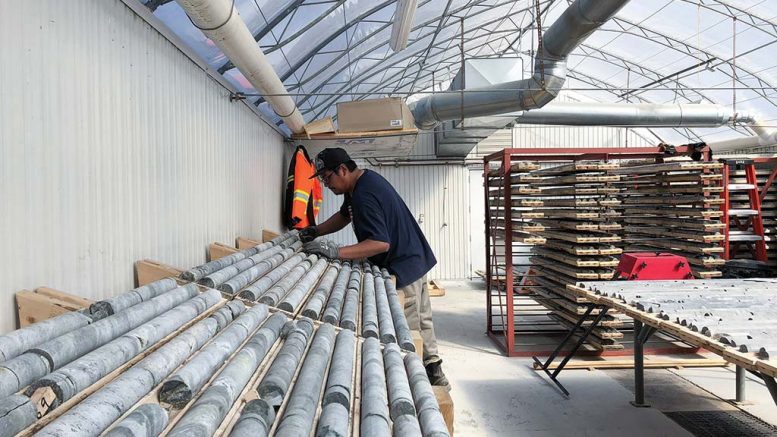
The company completed its 100% earn-in on the project from First Quantum Minerals in 2018. With the acquisition came an estimated $350 million of development and infrastructure at the site. The property has several past producing pits, a power line, electric substation, a starter camp, core storage and logging, a tailings management facility, and a water treatment plant.
Troilus’ ambition is to restart mining with both open pit and underground ore sources. Since 2018 it has drilled more than 150,000 metres. Contained metal in the indicated resource has more than doubled from 2 million gold-equivalent oz. to almost 5 million gold-equivalent ounces. Gold in the inferred category has more than tripled to 3.2 million oz. contained gold-equivalent from 700,000 gold-equivalent ounces.
Total open pit and underground indicated resources are 177.3 million tonnes grading 0.75 gram gold per tonne, 0.08% copper, and 1.17 grams silver per tonne (0.87 grams gold-equivalent per tonne) for contained metal of 4.3 million oz. gold, 322.6 million lb copper and 6.7 million oz. silver. The combined inferred resource contains another 116.7 million tonnes grading 0.73 gram gold per tonne, 0.07% copper, and 1.04 grams silver per tonne (0.84 grams gold-equivalent per tonne) for 2.76 million oz. gold, 189.7 million lb. copper and 3.9 million oz. silver.The resource estimate did not include 81,450 metres of drilling last year. The company plans to update the resources in the first half of 2022.
Troilus completed a preliminary economic assessment for re-opening the mine in 2020.
The Troilus project would have a 22-year life and produce an average of 220,000 oz. of gold in each of the first five years, then 246,000 oz. per year from years six through 14, each of the first 14 years, and 98,000 oz. from year 15 on. All-in sustaining costs per oz. of gold-equivalent would be $850 per oz. over the life of the mine. Projected payable gold is 3.8 million oz., payable copper is 265 million lb, and payable silver is 1.5 million ounces over 22 years. The mill will initially be fed with open pit ore, and underground ore would be introduced in year eight.
The initial capital cost (net of existing infrastructure) would be $333 million. That includes $78 million for open pit mine development, $172 million for the processing plant, $36 million for infrastructure, $11 million for the owners cost, and $36 million for contingency. The initial capital costs would be paid back over 4 years. The base case using a gold price of $1,450 per oz.
The Troilus project has a post-tax net present value with a 5% discount rate of $567 million and a post-tax internal rate of return of 22.9%.The post-tax cumulative cash flow would be $1.27 billion. Sustaining costs would total $506 million, including $240 million for underground development and $175 million sustaining costs during the life of the underground mine. Underground development would start in year six and ore delivery two years later.
The mineral processing plant has been designed with primary crushing, semi-autogenous (SAG) and ball milling, followed by gravity gold concentration, copper flotation, concentrate filtration, and tailings thickening and disposal. The gold-rich copper concentrate will then be smelted.
Gold recovery is estimated to be 90% with 30% captured in the gravity concentrate. Copper recovery is expected to be 90%.
A prefeasibility study is underway and expected to be completed in the first half of next year. If the permitting process and provincial approval process go smoothly, construction to restart the Troilus mine could begin in 2024.
Troilus Gold has a market capitalization of C$177 million.
(This article first appeared in The Northern Miner)




